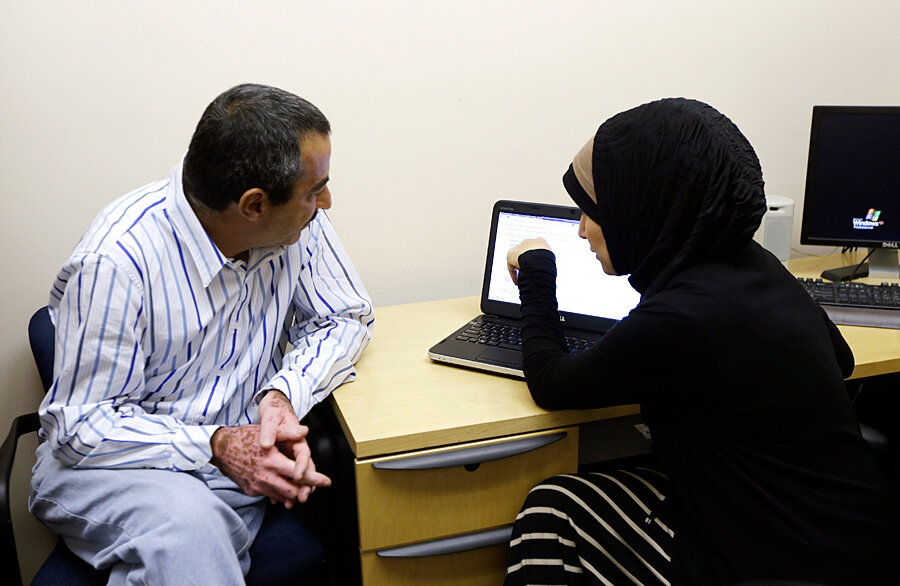Obamacare and you: How much does Obamacare cost?
Loading...
How much does Obamacare cost? That’s one of the most common questions average Americans have about the president’s signature health-care reform effort.
Many know that the Affordable Care Act (Obamacare’s official name) offers government cash to help many people buy insurance. But how much are the subsidies? Who gets them? If you don’t qualify for this help, is it possible you might have to pay more for health policies under the new law?
We’ll try to answer these questions in plain language as best we can.
First, you’ve got to figure out if you need or qualify for Obamacare at all. It’s offered through new state exchanges, which are virtual stores where you can shop for policies. Anyone can browse, but the exchanges are intended for people who buy their own insurance on the open market. It’s also meant for those who don’t have insurance now because their job doesn’t offer it, or because they can’t afford it.
If you get health coverage through your job, Obamacare is probably not for you, unless you work for a business with fewer than 50 employees.
The cost to you for Obamacare depends on a number of things. First is what sort of policy you buy. Insurers are required to offer different levels of products. Their cheapest “bronze” plans are supposed to cover 60 percent of your health costs. “Silver” plans cover 70 percent. “Gold” plans cover 80 percent, and “platinum” 90 percent.
Also, plans that cover a family are more expensive than those that cover a couple, or an individual.
Second, the cost to you will depend on where you live. Insurance will be more expensive in some states, even some counties, than in others. Partly this is because of the prices of doctors, hospitals, and so forth in your area. Partly it’s the result of the level of competition between insurers, which varies a lot.
In Wyoming, for instance, only two companies offer plans through the state exchange. Costs of health-insurance policies are higher there than in neighboring Nebraska, where more companies are vying for residents’ business.
Third, your cost will depend on how much money you make. You’ll be entitled to government subsidies if you earn up to 400 percent of the federal poverty level. For an individual, that’s $45,960 a year. For a family of four, it is $94,200.
Your assets, such as your house or car, don’t matter here. It’s all about income.
How big will those subsidies be? They’re based on a sliding scale. Obamacare caps the percentage of income that those eligible pay for their health insurance.
Those who make 100 percent of the federal poverty level aren’t supposed to spend more than 2 percent of their income on a health policy. Those who make 200 percent aren’t supposed to spend more than a bit more than 6 percent of their earnings on insurance.
For incomes that are 300 percent of the poverty level, you’re supposed to spend about 8 percent on Obamacare. If you make 400 percent of the poverty level, the cap is 9.5 percent.
The government takes the second-cheapest “silver” plan offered in your area as a benchmark for determining your subsidy. For those eligible, their subsidies will equal the cost of that plan, minus the money they contribute up to their percentage cap. They can use that subsidy to buy any of the metallic plans.
Confused? We’ll run a couple of examples through the Kaiser Family Foundation’s excellent subsidy estimating calculator.
Let’s say you’re the head of a family of four that lives in Dallas, with an income of $85,000 a year. The feds will give you a subsidy of $287 annually. You’d pay $8,075 toward the second-cheapest “silver” plan for your area. Assuming you get paid twice a month, that’s $336 per pay period.
Or say you’re a couple in San Francisco. Your combined income is $50,000 a year. The US government subsidy for you would be $2,322. Between the two of you, you’d be laying out $198 each biweekly pay period for “silver” health coverage.
Finally, we’ll estimate the case of a single parent living in Maine’s rural Aroostook County, with an income of $18,000. The government subsidy in this case would be $5,644 per year. The parent would pay $15 for "silver plan" health insurance, every two weeks.
We’ll close with a couple of additional important points. If you make less than 100 percent of the poverty level, you could be eligible for Medicaid. Not all states are expanding Medicaid under Obamacare, however, so your eligibility will vary according to where you live.
If you make more than four times the poverty level, you’ll be paying for insurance on your own. Generally speaking, younger and healthier people will pay more under the Obamacare system than they would have in the past. Older and less-healthy people will pay less.








